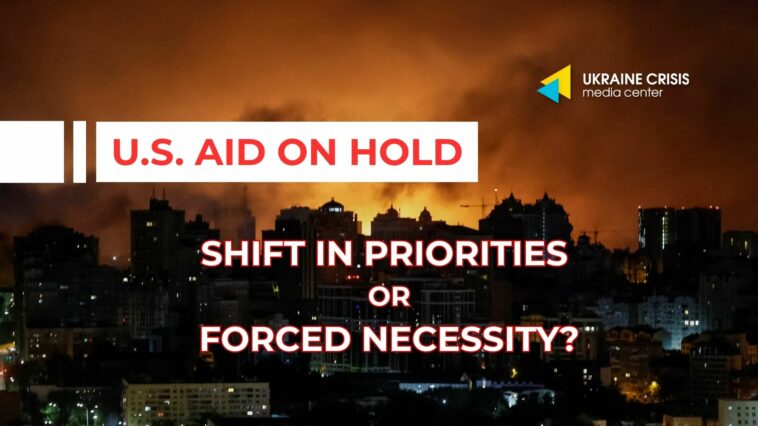Last week, it became known that U.S. Secretary of Defense Pete Hegseth ordered a halt to the transfer of certain types of weapons to Ukraine due to concerns on the stockpiles of the U.S. Armed Forces. Among the items placed under “freeze” were surface-to-air missiles for the Patriot air defense system, munitions for HIMARS MLRS, and Hellfire guided missiles. These systems are critically important for Kyiv amid intensified missile and drone attacks on Ukrainian cities, as well as Russia’s attempts to accelerate its summer-autumn offensive on the front lines.
Against this backdrop, the summary of a phone call between the Presidents of the United States and Ukraine, which took place on Friday, July 4, struck an optimistic tone. Volodymyr Zelenskyy stated that his conversation with Donald Trump was the most productive and positive exchange between the two leaders to date. “We discussed the air defense issue. I am grateful for the willingness to help. The Patriot is the key to defending against ballistic threats,” – Zelenskyy said.
For his part, the U.S. President did not confirm the halt in military support for Ukraine: “We have helped them [Ukraine], and we will continue to help,” – Trump stated. He made it clear that Washington would continue to provide military aid to Kyiv, since no progress had been made in negotiating an end to the war with Vladimir Putin. At the same time, the U.S. President refrained from specifying the terms and scope of continued American arms deliveries to Ukraine
In this context, Volodymyr Solovian, PhD, Head of the Hybrid Warfare Analysis Group at the Ukraine Crisis Media Center (UCMC), responded to journalists from the FREEДОМ TV channel regarding the reasons for the current U.S. reassessment of its military aid policy.
Text version of the interview:
Why is the U.S. reducing military assistance to Ukraine?
The current situation regarding U.S. arms deliveries to Ukraine is linked to the Trump administration’s attempt to shift the burden of supporting Ukraine onto European states.
When it comes to support for Ukraine, Donald Trump is convinced that the strategy pursued by his predecessor, Joseph Biden, was too costly for the United States and did not bring peace any closer. At the same time, after six phone conversations with Putin since the start of his second term, the U.S. President has failed to achieve any meaningful results on the diplomatic track of the Russia-Ukraine war. The Kremlin’s entrenched position has remained immovable, despite signals from the White House indicating its willingness to make concessions to Moscow – including on sanctions and arms deliveries to Ukraine.
Nevertheless, the U.S. President may view himself as having several “successful cases” in conflict resolution over recent months: the war between Israel and Iran, Congo and Rwanda, Pakistan and India. For the coming months, these cases may be sufficient to fuel Trump’s image as an effective dealmaker – even if Putin continues to ignore U.S. proposals for ending the war.
In this situation, in my opinion, Trump may choose to take a tactical pause until the fall – to observe how effectively Ukraine can withstand Putin’s summer–autumn campaign without substantial U.S. military aid.

Is it possible to resume and expand U.S. weapons procurement?
Yes, it is possible. In the coming weeks, we may see news of European countries initiating purchases of weapons systems that are in short supply for Ukraine – especially air defense systems, which are vitally important for protection against Russia’s missile and drone terror.
The procurement could also include missiles for HIMARS or even ATACMS. The shortage of these systems critically undermines the ability of Ukraine’s Armed Forces to deter the Russian offensive and protect civilian infrastructure.
We should also not forget about the influence of the defense lobby. Manufacturers of Patriot and other systems are interested in new contracts. Therefore, the debate will continue, and by autumn we will likely see clearer signals regarding the direction of Trump’s policy.
Moreover, following the summer vacation period, preparations will begin for the U.S. congressional elections scheduled for fall 2026. Republican Party and the White House strategists will consider the level of voter support for continued assistance to Ukraine. It will be important to monitor not only the overall support for Ukraine but also how much of a priority this issue is for American voters and how it may influence their electoral behavior.

According to official statements from Kyiv, Ukraine is ready to purchase additional air defense systems from the United States. But how realistic is this?
Ukraine has stated that it needs at least 10 Patriot batteries, with an estimated cost of around $15 billion. The key issue is not funding – European countries could help cover the cost – but whether the U.S. has the capacity to supply that number of systems.
The experience of the 12-day war demonstrates that even after years of investment in missile defense and technological cooperation with American manufacturers, Israel is still unable to fully defend its territory from missile threats posed by the ayatollah regime. The Israeli operation weakened, but did not destroy, Iran’s missile production capabilities. At the same time, the pace of interceptor missile production in the West significantly lags behind the growing stockpiles of ballistic arsenals in Iran, China, North Korea and Russia.
As a result, the U.S. is being forced to set priorities – between defending its overseas military bases, strategic infrastructure, and its regional allies or partners.
Despite all the difficulties, Ukraine must maintain dialogue with the White House on defense procurement, engage European partners in communication with Trump, and synchronize lobbying efforts with American arms manufacturers.




